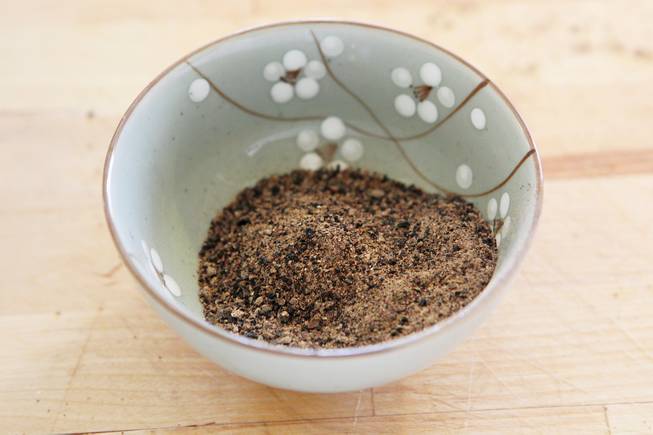
Sam Morris / Las Vegas Sun
This is how dried and pulverized placenta looks, this example being from Jodi Selander’s second daughter, Thursday, Feb. 21, 2013.
Friday, March 1, 2013 | 2 a.m.
UNLV professor Daniel Benyshek and doctoral student Sharon Young are pioneering research into maternal human placentophagy, the practice of mothers consuming their placenta.
The ingestion of placenta pills is a growing phenomenon in the United States and especially in Southern Nevada, home to one of the foremost placenta encapsulation specialists in the world.
Benyshek first heard about placenta consumption from North Las Vegas mother Jodi Selander, who standardized the practice of converting placenta into pills and launched a global afterbirth business selling do-it-yourself home encapsulation kits and instructions.
"I had never heard of human placentophagia (before I met Selander), but I was fascinated," Benyshek said. "There is very limited research on this topic and so many questions."
Through their research, which includes a recent survey of women's motivations for ingesting placenta, Benyshek and Young discovered some interesting facts about placentophagia:
1. Placentophagia is common among land mammals. Camels and humans are the only land mammals to not engage in the practice.
2. The first reported account of animal placentophagy occurred in the 1930s, with an account of a female macaque monkey eating her placenta. Mark Kristal, a behavioral neuroscientist at the University of Buffalo in upstate New York, has been studying the phenomenon for over two decades.
3. UNLV researchers looked at nearly 180 societies around the world to find cultural examples of mothers eating their placenta. They could not find any traditions. However, in Chinese traditional medicine, men ingested zi he che, or dried placenta medicine, to boost their energy over 600 years ago.
4. The first mention of human placentophagy was published in a 1972 paper, which had an account of women ingesting placenta in a communal birth setting. During the late 1970s and 1980s, placentophagy began picking up steam in the United States with the home birth movement. Home births account for about 1 percent of all births in the United States.
5. Placentophagy didn't break into the mainstream until a few years ago, with the advent of Selander's online business: Placenta Benefits, which has trained more than 300 certified placenta encapsulation specialists around the world. Since then, placentophagy has been covered on the Dr. Oz show and in national magazines. It also has received celebrity attention from January Jones and Holly Madison.
6. Placentas are usually about a sixth of the size of a baby, about one to three pounds. About 100 to 200 pills could be produced from a placenta.
7. The placenta nourishes the fetus. While there is limited research on the contents of human placenta, it is known to have nutrients such as iron and traces of hormones such as progesterone, oxytocin, testosterone and estrogen.
8. While the majority of women in the UNLV study consume placenta pills, there are a few women who cook their placenta in food, blend it into a smoothie or eat it raw.
9. All Las Vegas Valley hospitals have policies which allow the release of a mother's placenta a day to a week after the baby was born. That wasn't always the case however. Selander advocated for the a policy change after Sunrise Hospital refused several of her clients' requests in 2007. Nevada has since passed laws that established guidelines for the release of human placenta from hospitals.
10. Las Vegas is home to Megacare, a manufacturer of dietary supplements such as placenta pills produced from New Zealand sheep.


Join the Discussion:
Check this out for a full explanation of our conversion to the LiveFyre commenting system and instructions on how to sign up for an account.
Full comments policy